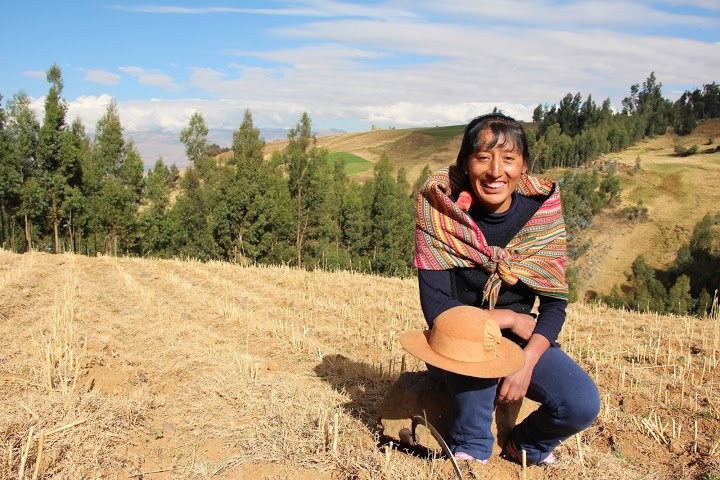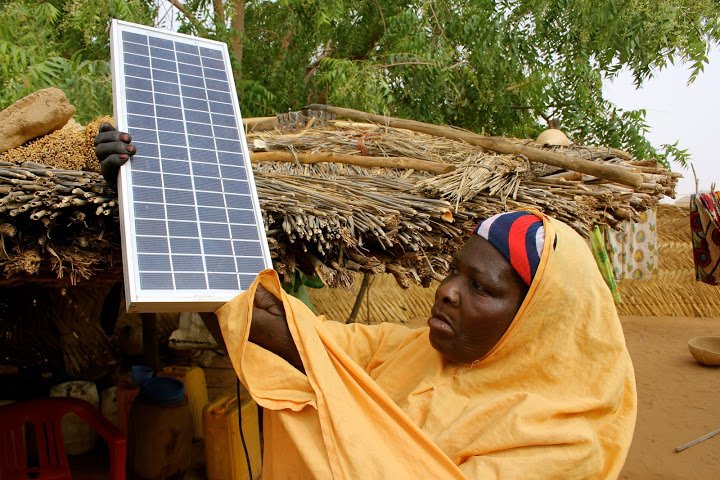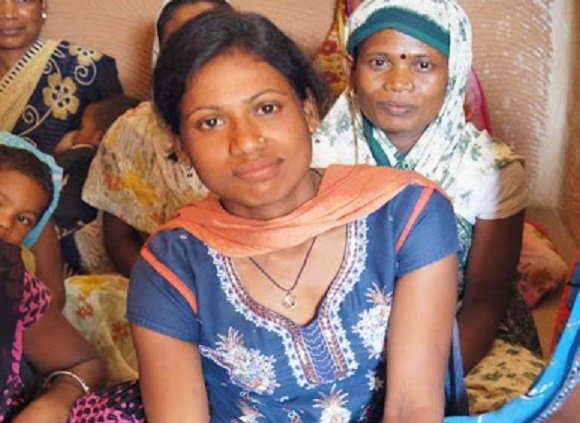This article was contributed by Viivi Erkkila on behalf of CARE Climate Change.
Climate change is essentially a question of social justice. What’s really unfair is that the poorest and most vulnerable people – particularly women and girls – suffer the most even though they’ve done the least to cause the problem in the first place.
Cultural norms and limited access to resources make women more disadvantaged, but they are not just the victims of injustice, poverty and climate change. Far from it. Women across the world are stepping up to make a difference in their families, communities, countries, – the entire world. They are leading actions to adapt to the changing climate and to help improve people’s resilience and preparedness to disasters.
That's why we would like to introduce five inspirational women who have stepped up in their communities to lead climate action for a better future. Here they are:
Rizalyn, the Philippines

Rizalyn Biong, a 28-year-old mother of three, is one of the millions of people that were heavily affected by typhoon Haiyan in December 2013. Like her neighbours, Rizalyn lost her home when Haiyan hit their village.
“It was really devastating. I had just given birth to my youngest child when the typhoon happened. We didn’t expect it would be that strong. I struggled a lot because I couldn’t give breast milk to my baby because I hadn’t eaten anything,” Rizalyn says.
Working with a local organisation ACCORD, CARE provided Rizalyn with emergency food and shelter. Now, Rizalyn is working hard with CARE to help her community adapt to the the threat of climate change, educating people in her village on the risks of disasters and how to reduce them.
Rizalyn is already seeing the change she has helped to bring about: “People in my community really apply the lessons they have learned from us. Whenever there’s an upcoming typhoon, they already make plans, keep their belongings safe and prepare to evacuate to safer locations.”
Carmen, Peru

Carmen, 23, lives in the Shullcas region of Peru. She’s the eldest of six children. When she was growing up, she became worried about her family’s economic situation: as the temperatures kept rising, their land was giving them less and less. She was also worried about the future of their water resources, as the Huaytapallana glacier was disappearing. “Now we have less water to grow our plantations and we have to plant during the rainy season,” she says. "Otherwise we wouldn’t have enough water."
Determined to earn money, Carmen moved to Lima to work as housemaid but she was treated badly, “as if I was worthless.” She decided to return to her village and joined one of CARE’s projects on adapting farming practices to climate change.
“Today I’m fighting the idea that rural areas have no future. Local solutions are possible, and we can help small family farms to survive. But we also need global action to limit the damages of this climate crisis.”
Zennou, Niger

Zennou Boukari, a 50-year-old mother of ten, lives in Aman Bader, Niger. She sells peanut and palm oil in the market, and is a respected businesswoman in her community. This might be why the women in her village chose her to be in charge of their solar kit – a set of equipment used for charging mobile devices with solar power.
Each time a phone is charged, which happens all the time, the communal fund set up by Zennou and the other women in the village makes 75 Francs CFA. “We use the money to give the women of the village access to credit,” Zennou says.
The solar kits are also part of the village’s community early warning and response system. Disconnected from the electric grid, and faced with long distances to towns and neighbouring villages, there is no reliable source of power available. The solar chargers don’t just improve communication; they also enable sharing of weather information. Now, community volunteers equipped with rain gauges read the exact amount of rainfall and use their mobile phones to share the information widely, helping villagers to know when to plant or use a new, improved seed.
Sumati, India

Sumati, 21, is part of the Adivasi, a small native community in the Chhattisgarh State in India from India. Her community is reliant on farming, but rains have become erratic and the monsoon season is changing. Less and less people are now able to survive by simply farming land for food and have had to move away to look for work elsewhere.
“Our resources and food sources mainly depend on farming. But for the last 20 years, we have had less and less rain and water,” she says. “The monsoon season is also changing. Now few of us can survive by simply farming our land for food and have had to move away to look for work elsewhere.
Sumati now works with CARE as a community organiser for a climate change adaptation project whilst also studying for a correspondence course. “It’s extremely rare for a woman from my community [to study]. We don’t have many opportunities, only many responsibilities. I want Adivasi women to have better access to different resources and services.”
Sadly, those who have done the least to cause climate change will be hurt the most, but these women's stories offer a glimmer of hope. While climate change is already having an impact on their communities, these women are already building the resilience to combat its effects. Rizalyn, Carmen, Zennou and Sumati are just a handful of the women across the world leading their communities towards a more sustainable future.
This Earth Day, as leaders of over 160 countries come together to sign up to the historic Paris Climate Agreement, their stories are a reminder that tackling climate change is both a local and a global challenge.
The views expressed here are not necessarily those of each of the partners of Global Citizen.